After decades of “hiding” in the vastness of the mountains and forests, the “Nho Que” stream of the Da Bac highlands has now revealed its soft, majestic beauty when a new road of historical significance was opened…
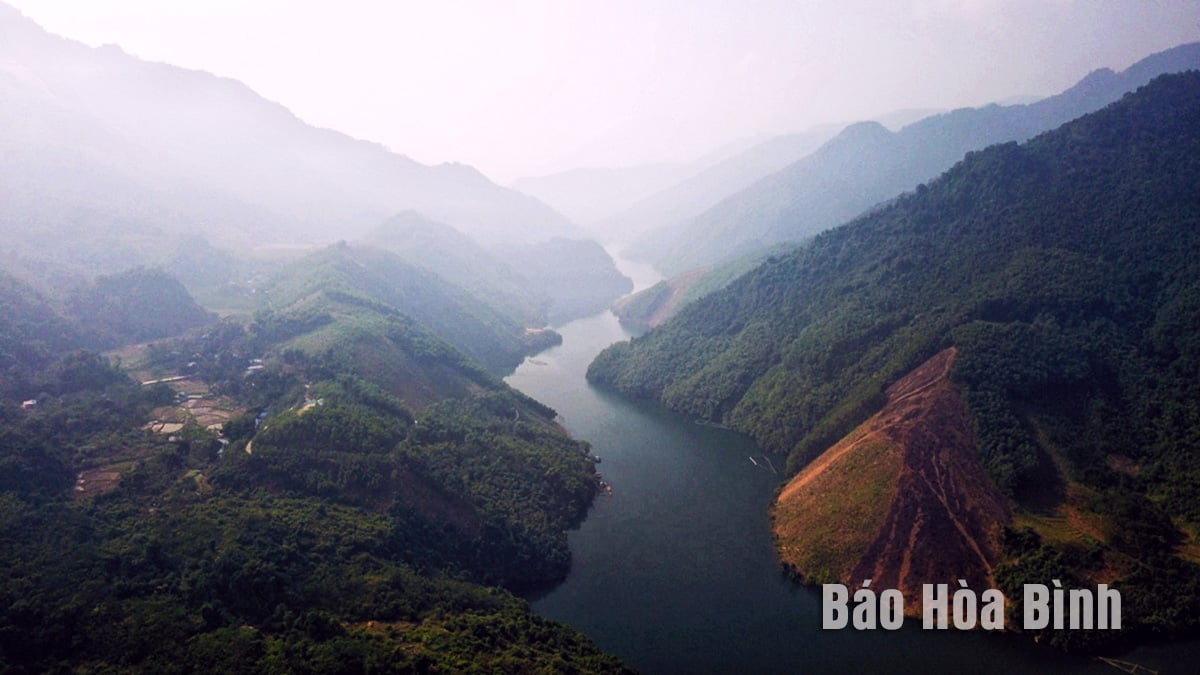
A version of Nho Que River in Da Bac highland, Hoa Binh province.
The emerald green Nho Que River flows between towering limestone cliffs and has long been one of the symbols of the Ha Giang stone plateau.
Nho Que River is honored as one of the unique tectonic valleys in Vietnam. If anyone has ever admired and explored the natural masterpiece of Ha Giang, they will surely have beautiful words when they first see another version of "Nho Que River" in the highland district of Da Bac.
Awakening the "Cinnamon Grape" stream
The damming of the project of the century – Hoa Binh Hydroelectric Plant has created a giant artificial lake with magnificent natural scenery. In the past, under the surface of Hoa Binh Lake were layers of undulating mountains, now forming hidden islands.
Therefore, Hoa Binh Lake is likened to Ha Long Bay on land with countless islands and deep-water bays. The "Nho Que" stream in the mountainous district of Da Bac that we are referring to is the result of blocking the Da River. It is a branch of the river in the territory of Giằng hamlet, Cao Sơn commune, running through So hamlet, Trung Thành commune.
This river branch with its magnificent scenery has been present for decades after the construction of the Hoa Binh hydroelectric project, but it was not until the Cao Son - Trung Thanh route was opened that we had the opportunity to admire this masterpiece.
Together with comrade Ngo Van Cuong, Secretary of the Cao Son Commune Party Committee, we began our journey to explore the “Nho Que” river of Da Bac. From the commune People’s Committee center through Tam hamlet, then to the newly opened road down to Gieng hamlet.
This road is opposite the newly opened route from Cao Son commune to Trung Thanh, separated by a branch of the Da River. On the road, you can stop to see more than 100 roofs of Gieng hamlet and the Cao Son - Trung Thanh road winding halfway up the mountain.
“The river branch running along the new route is actually the Giang stream. However, since the Hoa Binh hydroelectric dam was built, the water level has risen, reaching the Giang stream bridge, creating a very beautiful river branch. At this time, the water level is lower, so you can clearly see the Giang stream flowing through the Giang hamlet,” said comrade Ngo Van Cuong.
On our journey to explore the river branch, we met Mr. Dinh Van Son, a resident of Gieng hamlet. While herding buffalo, Mr. Son sat weaving fishing nets.
Born and raised in Giằng hamlet, childhood memories associated with the stream full of shrimp and fish are always deeply engraved in Mr. Son's mind.
According to him, before the construction of the Hoa Binh hydroelectric project, the Giang stream flowed under the foot of the mountain, then flowed into the Da River. The stream had a lot of shrimp and fish, so almost every family in the village had a fishing net to catch them.
In the area where the current deep water stream is formed, in the past, Mr. Son and his friends used to herd buffaloes, collect bamboo shoots, and collect firewood. Once, they followed the Giang stream all day, then crossed the mountain to So hamlet, Trung Thanh commune.
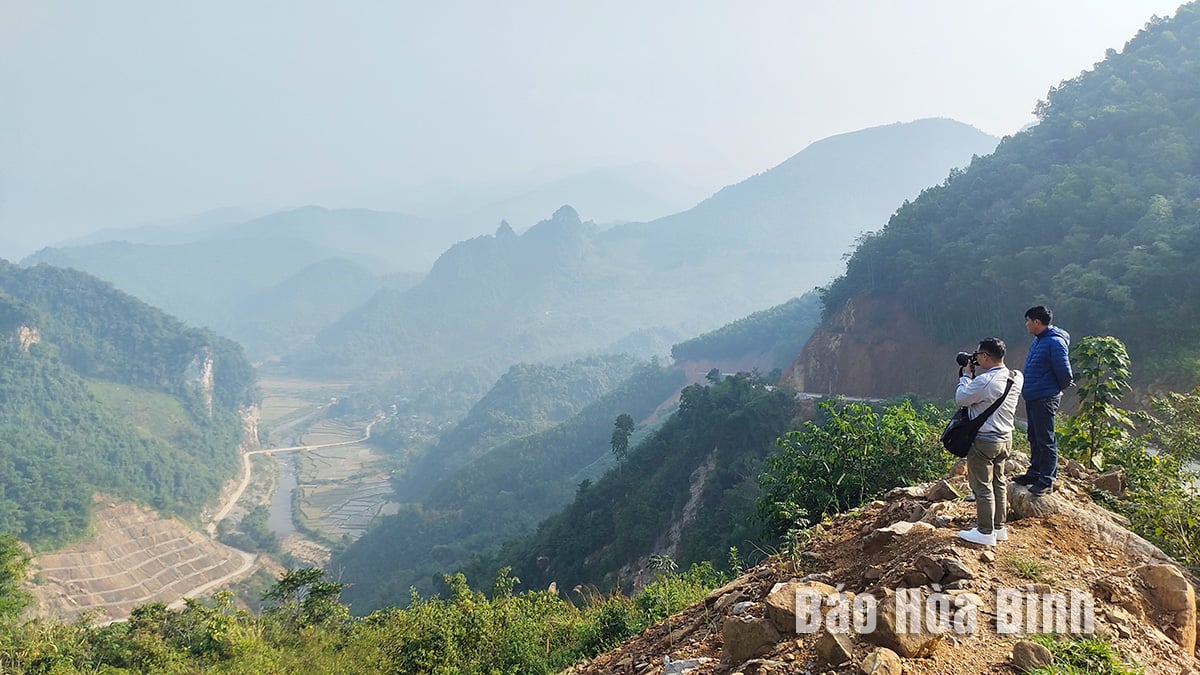
Tourists are impressed by the wild and majestic natural scenery of Giang stream, Da Bac district, Hoa Binh province.
“Previously, the river branch was deep in the mountains, making it very difficult to travel. Now that a new road has been opened, it only takes 15 minutes to get to So hamlet. In the past, strangers rarely came to the hamlet, but now the hamlet has become a center for going to the highland communes, so there are many vehicles passing by. Many people are excited because they find this river branch beautiful, so they stop to take pictures,” Mr. Son shared.
Ideal stopover
As Mr. Son shared, the river branch has a majestic beauty with two parallel mountain ranges on both banks. If the Cao Son - Trung Thanh route had not been opened, the "Nho Que version" of the Da Bac highlands would still be hidden in the mountains.
The road opens halfway up the rocky mountain, so it is winding, curving and towering with steep cliffs. This season, some forest trees are blooming, especially the reeds and reeds along the road, creating a picturesque landscape.
According to observations, at this time the river water is blue, in the branch of the river there are only a few fish cages, the rest still retains the wildness of the mountains and forests.
“Follow this branch of the river to reach the boat dock in Xom Lanh. From the boat dock you can explore famous tourist attractions on Hoa Binh Lake.
During the high water season, boats can be taken all the way to Giằng hamlet. In addition to the community tourism village of Sung hamlet, Cao Son commune is also aiming to develop tourism in Bai hamlets, especially Giằng hamlet, as this river branch is known to many people," said Ngo Van Cuong, Secretary of the Cao Son commune Party Committee.
Next to the river branch that is likened to a version of Nho Que River, Gieng hamlet is a village with many factors to create an attractive destination in the future. According to Mr. Dinh Van Lam (71 years old), when the hamlet was first established, Gieng had only 7 houses, leaning against the mountain, facing Gieng stream.
Today, this “good land” has over 100 houses with 4 ethnic groups living together: Kinh, Muong, Tay, Dao. “We still maintain our ethnic customs and practices. During festivals, people of each ethnic group wear their ethnic costumes and perform their own cultural performances,” said Mr. Lam.
For Mr. Lam and the people of Giằng hamlet, preserving the nation’s long-standing cultural identity is the ultimate task. The diversity of cultural colors is also a “plus point” for Giằng hamlet to think about the direction of tourism development in the future.
The Giang stream running between the terraced fields of the hamlet is considered one of the most beautiful sections of the stream. Although it is the beginning of the dry season, the water source is still abundant and clear.
In the middle of the stream is a sandy beach several hundred meters wide, upstream there are still ancient trees hundreds of years old.
Mr. Luong Van Hau, Head of Giang Hamlet, said: Since the Cao Son - Trung Thanh road was built, many people in the district have known about Giang Stream. In the summer, the number of people flocking to the stream is increasing.
In particular, many groups have come to camp, grill chicken, grill fish right on the sandbank in the middle of Giang stream. With beautiful scenery and convenient transportation, we really hope that one day in the near future, the hamlet can become a stopover for tourists.
To develop tourism, many factors are needed. But with a beautiful river branch like Nho Que River, the people of Giằng Hamlet, Cao Sơn Commune as well as the communes in the highlands of Đà Bắc have the right to be proud of a landscape that is awakening.
Possessing wild and majestic beauty, the beautiful river branch created by blocking the Da River to build the Hoa Binh Hydroelectric Plant will be an impressive new check-in and discovery point in the Northwest gateway region.








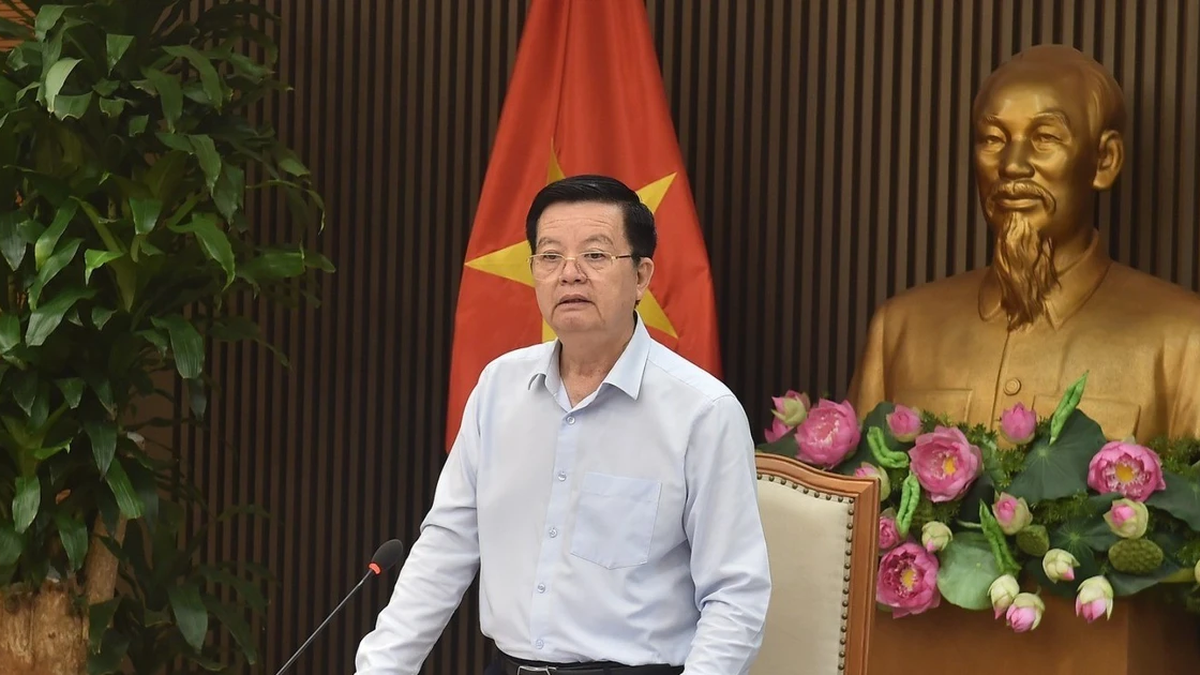















![[Photo] National Assembly Chairman attends the seminar "Building and operating an international financial center and recommendations for Vietnam"](https://vphoto.vietnam.vn/thumb/1200x675/vietnam/resource/IMAGE/2025/7/28/76393436936e457db31ec84433289f72)







































































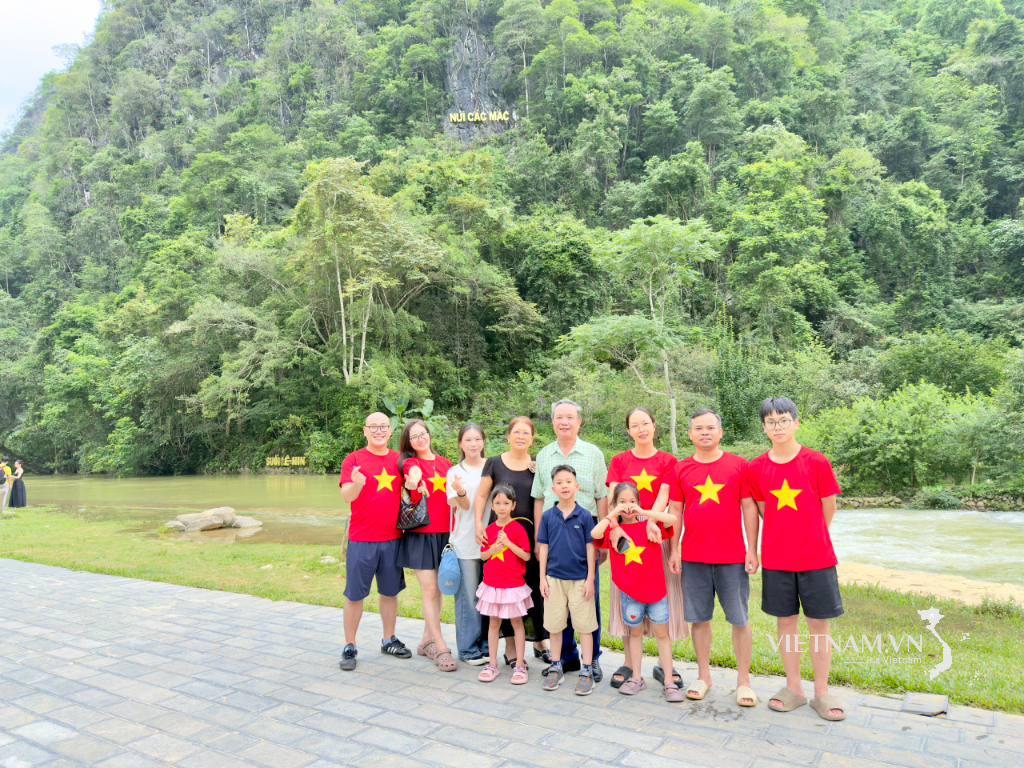
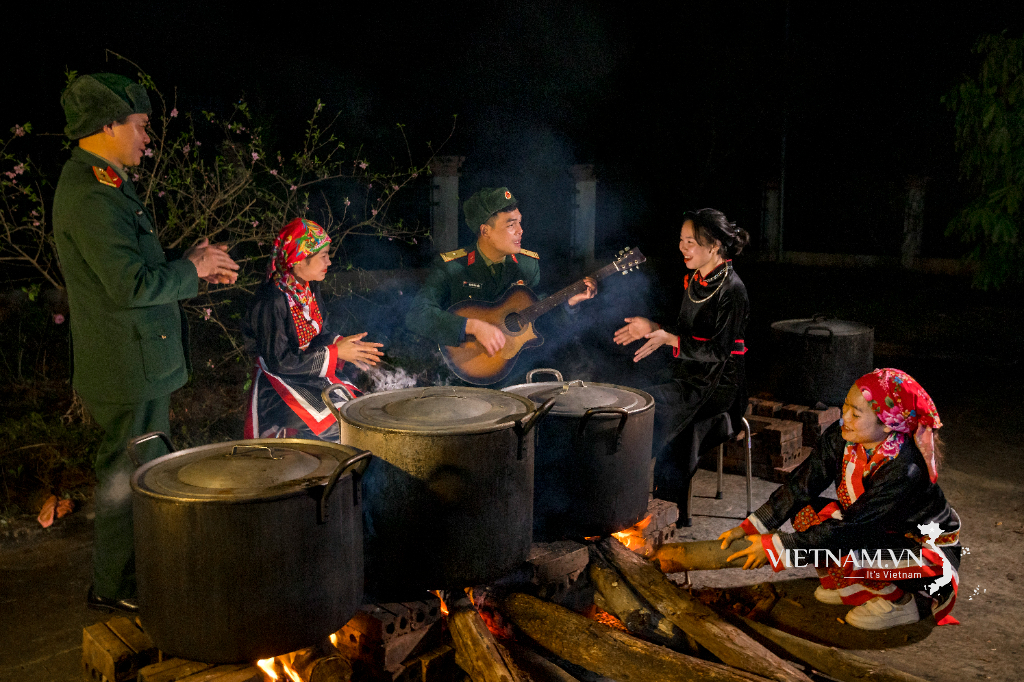
Comment (0)